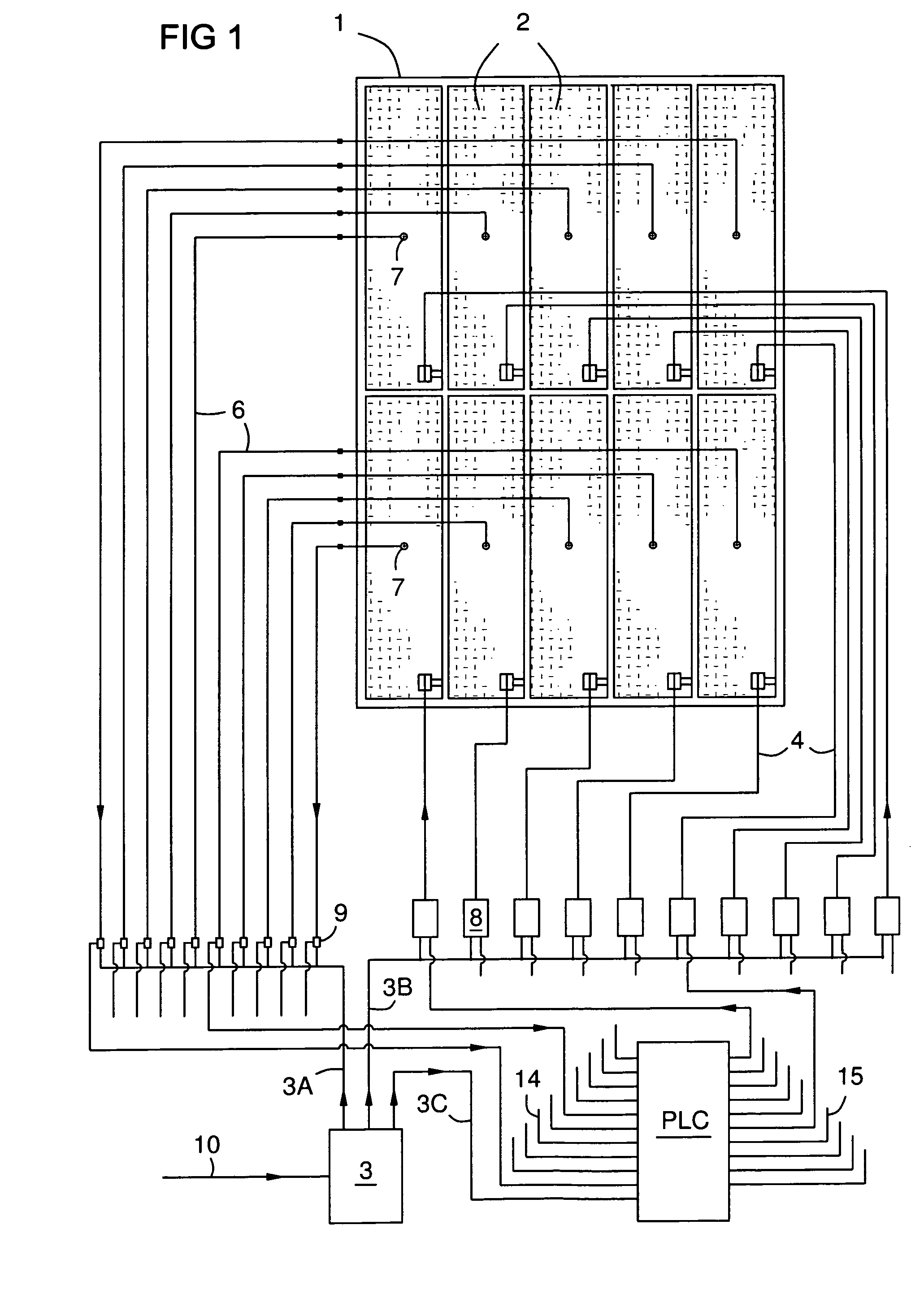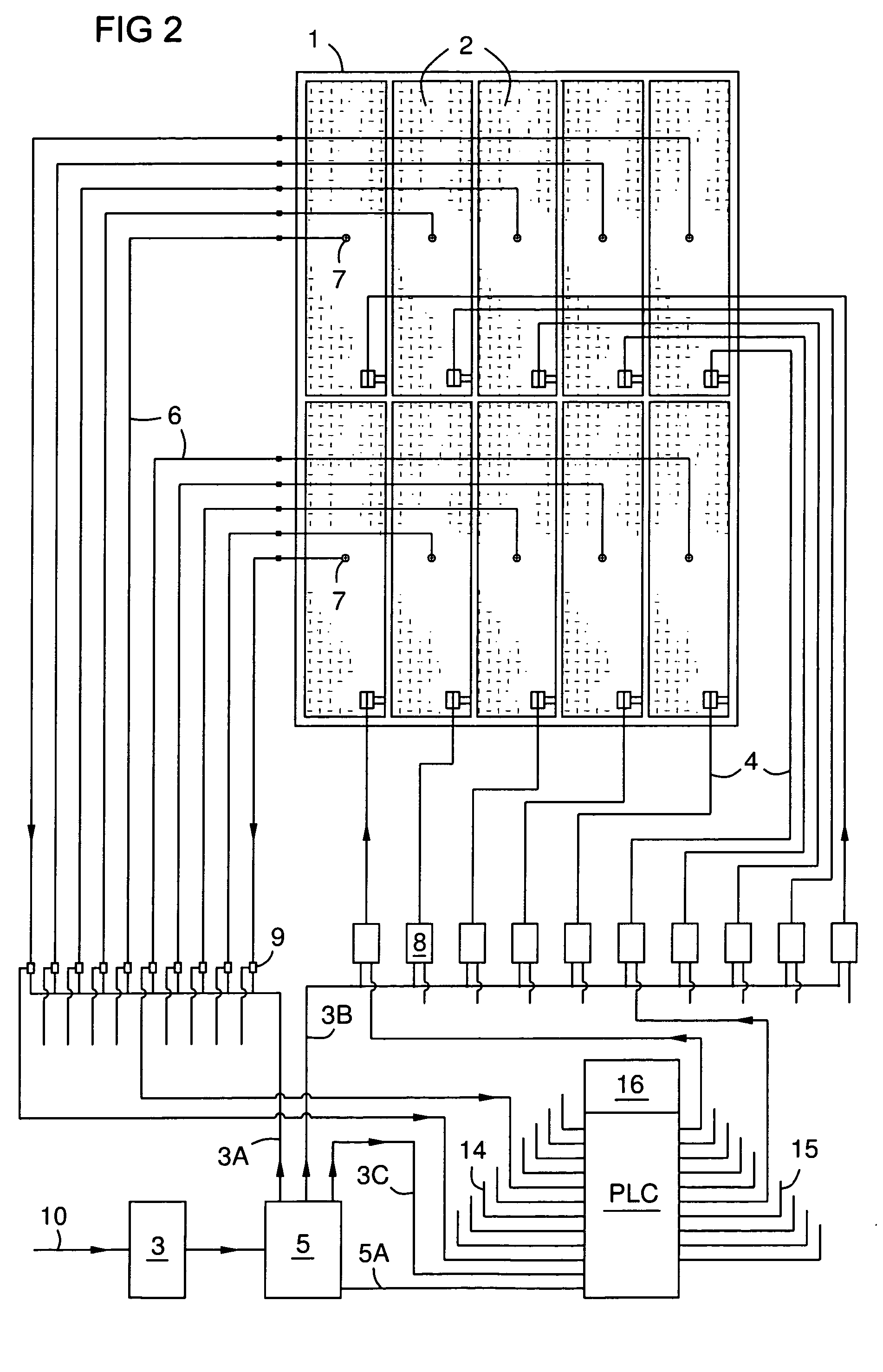Nematode extermination in place using heat blankets
a technology of heat blankets and nematodes, which is applied in the direction of ohmic-resistance heating, insect catchers and killers, agriculture tools and machines, etc., can solve the problems of long time-consuming and laborious, ineffective pesticide chemicals that are environmentally acceptable, and cannot be easily reached with pest control measures. achieve the effect of energy-saving
- Summary
- Abstract
- Description
- Claims
- Application Information
AI Technical Summary
Benefits of technology
Problems solved by technology
Method used
Image
Examples
example 1
Current Control Example 1
[0037]The PLC activates current to a first blanket until a set-point of about 177° C. (350° F.) is reached, then it turns off the current to the first blanket. When the first blanket temperature drops below a given low value, such as 150° C. (300° F.), it applies current again. The temperature range between the low high values is a desired temperature range for a blanket. The first “on” cycle is longest because the ground is cold. As the ground becomes warmer, each successive “off” cycle becomes longer. After an hour or so, enough “off” time is available to start another blanket during the “off” time of the first blanket. An algorithm in the PLC such as basically illustrated in FIG. 4 allocates current to the maximum number of blankets that can be operated concurrently within the acceptable temperature range. The number of concurrent blankets depends on the available current and the cycle times experienced. The cycle durations depend on the soil type and con...
example 2
Current Control Example 2
[0038]Another method is pulse width modified (PWM) control. Alternating current is rectified into direct current, which is time-sliced into segments or pulses by the PLC. For maximum heating the current is continuous. If less current is required pulses are spaced with gaps in a percentage that is proportional to the need. Each pulse and gap can be more or less than a second in duration, depending on the controller and the current required at a given time. With this method the controller works constantly and maintains an accurate set-point, such as 177° C. (350° F.). Instead of big changes in current that average to a lower value, the current ramps gradually down to lower levels as needed.
System Advantages
[0039]1) Effectively exterminates of nematodes in the root zone of lawn grasses and garden soils[0040]2) Relatively quick results[0041]3) Energy efficient[0042]4) No chemicals or pesticides required[0043]5) Works any time of year[0044]6) Shaded areas of the ...
PUM
 Login to View More
Login to View More Abstract
Description
Claims
Application Information
 Login to View More
Login to View More - R&D
- Intellectual Property
- Life Sciences
- Materials
- Tech Scout
- Unparalleled Data Quality
- Higher Quality Content
- 60% Fewer Hallucinations
Browse by: Latest US Patents, China's latest patents, Technical Efficacy Thesaurus, Application Domain, Technology Topic, Popular Technical Reports.
© 2025 PatSnap. All rights reserved.Legal|Privacy policy|Modern Slavery Act Transparency Statement|Sitemap|About US| Contact US: help@patsnap.com



